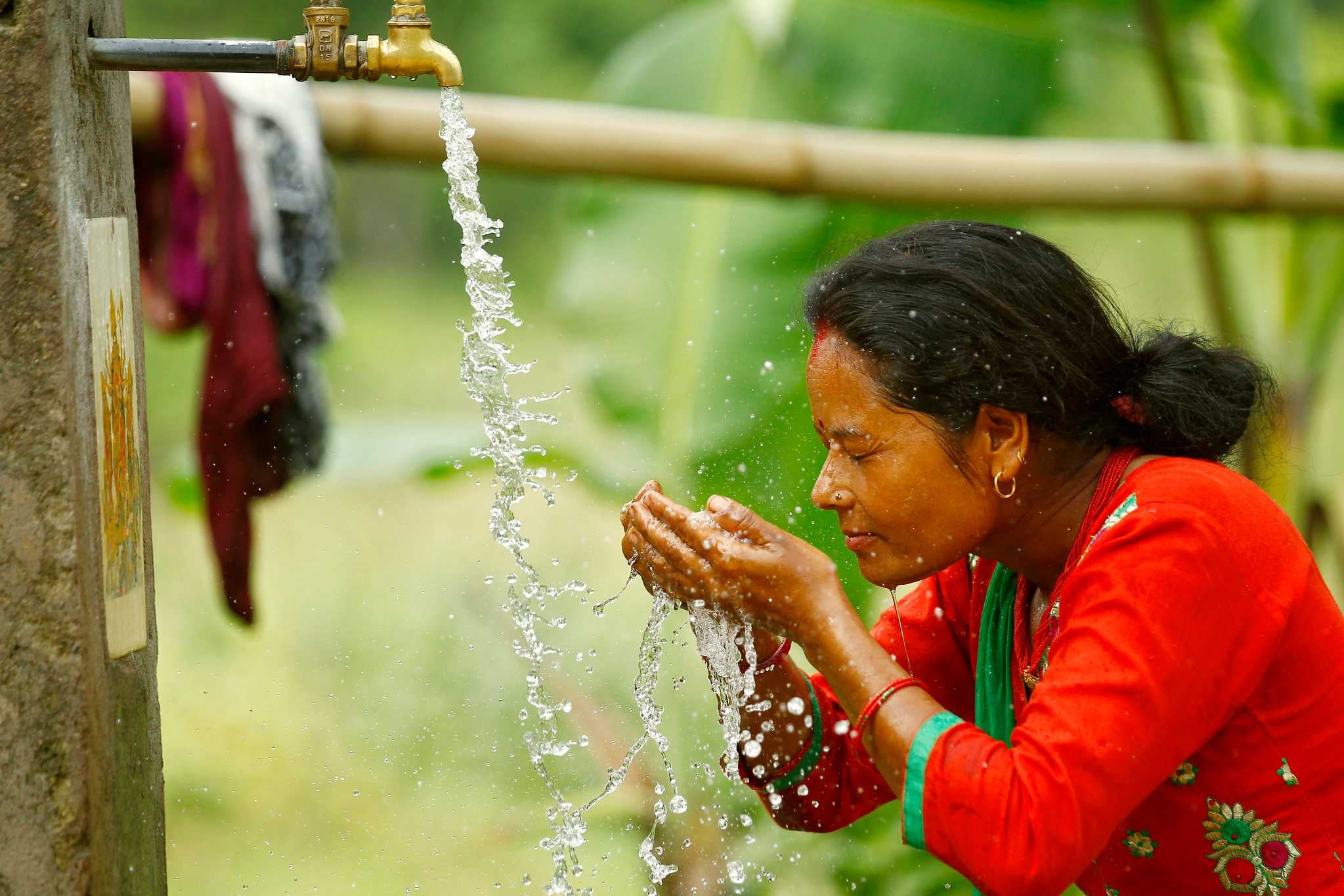The impacts of crises are not gender-neutral. Protracted conflicts and the accelerating impacts of climate change have increased care demands on women and girls. When these demands grow, and public systems are unable to cope with increased pressure, women and girls absorb the bulk of care work.
Care work, a vital public good, underpins well-being and a thriving, sustainable economy. Sustainable Development Goal 5.4 seeks to value unpaid care and domestic work, promote shared responsibilities within households, and provide essential services and social protection. Yet, women and girls worldwide shoulder a disproportionate share of care work that is unpaid, unrecognized, and undervalued.
How climate change intensifies the care crisis for women
Environmental degradation and the global climate emergency are intensifying the global care crisis. People with fewer resources, including Indigenous women, ethnic minorities, those living with disabilities and with HIV, women of African descent, and LGBTIQ+ persons in developing and Small Island Developing States can be hit especially hard by these compounding crises. Women and girls already spend on average three times more on care work than men and boys. Climate change further amplifies women’s and girls’ unequal load of unpaid care and household chores.
Women bear the brunt of water scarcity
Women and girls, especially those living in rural areas, who are responsible for managing resources and running households, are particularly vulnerable to climate shocks. Women and girls bear the brunt of providing drinking, cooking, and sanitation water for their families. Some 1.8 billion people worldwide rely on drinking water from supplies that are off premises and women and girls are responsible for collecting water in seven out of ten households without water on premises.
Climate change is having a significant impact on water resources worldwide. Droughts are becoming more frequent and severe, while rainfall patterns are becoming increasingly unpredictable. Ten per cent of the world’s female population, some 380 million women and girls, live in areas facing high or critical water stress, a figure that is expected to reach 647 million by 2050.
During droughts, women and girls stand in long queues and walk long distances to collect water for their families. In Iraq, women spend up to three hours a day collecting water. In India, women and girls spend more than 50 minutes a day collecting water compared to men and boys’ four minutes.

Droughts deepen food insecurity for women
Women also face greater food insecurity than men. When there is food scarcity, it is common for men and boys to be fed first with women eating last and least. Droughts force many women and girls into subsistence farming and activities which increases their workloads as they grapple to secure sufficient food provisions for their families.
Climate shocks increase unpaid health care work for women and girls
A rise in diseases linked to the climate crisis is disproportionately impacting the care-load for women and girls. A study in Delhi, India, and Dhaka, Bangladesh, showed that women spent on average an additional hour per day on care work when a member of their family had a climate-related illness, such as a water-borne disease from torrential rains.
Pregnant women face an increased risk of complications, including pregnancy loss, linked to drought and food scarcity.
Women: Unpaid “sustainability saviours”
Historically, women and girls have shouldered climate mitigation activities such as waste management, reforestation, and land rehabilitation. As climate crises continue to swell, the burden of environmental care has spiked further gender inequalities, and the number of hours women and girls spend on caring for the planet.
Women are at the forefront of climate justice and sustainability efforts, in part because access to a safe, clean, healthy, and sustainable environment is a matter of life and death for their families. Many women engage in climate action because they consider it essential to fulfill their role as the primary caretakers of their communities.
Despite the key role of women in tackling the impacts of climate change, women environmental human rights defenders are facing an uptick in gender-based violence and femicides. In 2022, at least 401 human rights defenders were killed, most in Latin America, and 17 per cent were women. Women also face resistance within their indigenous communities who accuse them of wasting time on activism and face defamation, threats and physical attacks.
What is a care society?
The world is facing two seemingly distinct yet deeply intertwined crises, whose links are often overlooked in climate discussions.
The first crisis centers around the unnoticed and unequal distribution of unpaid care work, primarily borne by women and girls. The second is the looming climate emergency, characterized by rising temperatures and the urgent need to reduce greenhouse gas emissions. While these crises may appear unrelated, they are inextricably linked, demanding our collective attention and action.
Remarkably, just 11 per cent of Nationally Determined Contributions—the measures and actions that parties of the Paris Agreement plan to adopt to reduce greenhouse gas emissions—mention the unpaid care work of women and girls, and only Cambodia’s include actions to reduce their workloads.
The sixty-sixth Commission on the Status of Women has sounded the alarm warning that “natural resources and ecosystems and women’s labour are treated as infinite and are undervalued in the current metrics of economic growth, such as GDP, despite being essential to all economies and the well-being of present and future generations and the planet”.
Within this complex snapshot, the concept of a care society emerges as a pressing alternative to the current economic and development model based on the extraction and exploitation of natural resources, fossil fuels, and human lives. It emphasizes the crucial role of both caring for people and the planet. Recognizing the irreplaceable value of care is essential, as is addressing the unequal care burden that women and girls currently bear, and increasingly so amid the climate emergency. The provision of care should be a shared responsibility involving the state, markets, communities, and families.


